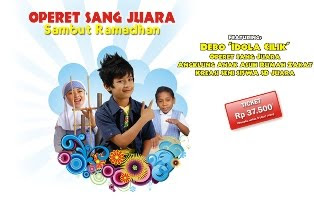My Indonesia
Indonesia, the largest archipelago and the fifth most populous nation in the world, has a total of 17,508 islands, of which about 6,000 are inhabited. Indonesia extends 3,198 miles (5,150km) between the Australian and Asian continental mainland and divides the Pacific and Indian Oceans at the Equator. With a total land area of 767,777 square miles (1,919,443 sq. km), its 190 million inhabitants are made up of 300 ethnic groups who speak an estimated 583 different languages and dialects. There are five main islands in Indonesia. These are: Java, Sumatra, Kalimantan, Sulawesi and Irian Jaya.
Across its many islands, Indonesia consists of distinct ethnic, linguistic, and religious groups. The Javanese are the largest and most politically dominant ethnic group. Indonesia has developed a shared identity defined by a national language, ethnic diversity, religious pluralism within a majority Muslim population, and a history of colonialism and rebellion against it. Indonesia's national motto, "Bhinneka Tunggal Ika" ("Unity in Diversity" literally, "many, yet one"), articulates the diversity that shapes the country. However, sectarian tensions and separatism have led to violent confrontations that have undermined political and economic stability. Despite its large population and densely populated regions, Indonesia has vast areas of wilderness that support the world's second highest level of biodiversity. The country is richly endowed with natural resources, yet poverty is a defining feature of contemporary Indonesia.
Across its many islands, Indonesia consists of distinct ethnic, linguistic, and religious groups. The Javanese are the largest and most politically dominant ethnic group. Indonesia has developed a shared identity defined by a national language, ethnic diversity, religious pluralism within a majority Muslim population, and a history of colonialism and rebellion against it. Indonesia's national motto, "Bhinneka Tunggal Ika" ("Unity in Diversity" literally, "many, yet one"), articulates the diversity that shapes the country. However, sectarian tensions and separatism have led to violent confrontations that have undermined political and economic stability. Despite its large population and densely populated regions, Indonesia has vast areas of wilderness that support the world's second highest level of biodiversity. The country is richly endowed with natural resources, yet poverty is a defining feature of contemporary Indonesia.
Thursday, July 23, 2009
Fried Banana
(Pisang Goreng)
(Pisang Goreng)

Ingredients:
* 1 ripe black-skinned plantain or 4 small finger banana (make sure that the banana is sweet)
* 1 egg
* 1 tsp. sugar
* 6 Tbs. flour
* water
* a pinch of salt
* vegetable oil for deep frying
Instructions:
* Place flour in a deep mixing bowl. Make a well in the middle of the flour, and add egg, sugar and salt. Add water little by little. Whisk vigorously until batter is evenly smooth for coating and not too thin. If it is too thin, add more flour.
* Peel plantain or banana and cut in half lengthwise and then cut again with 4-inch width. Dip into batter to coat generously.
* Heat oil in a wok or deep fryer until moderately hot. Place coated plantain or banana in the wok or deep fryer and fry slowly until golden brown and crispy. This usually take approximately 10-15 minutes. Remove bananas from oil, drain on paper napkins and dry well.
* Serve while still warm
Makes 4 servings.
Labels: Traditional Dessert
0 Comments:
Subscribe to:
Post Comments (Atom)



,+Jakarta.jpg)




Post a Comment